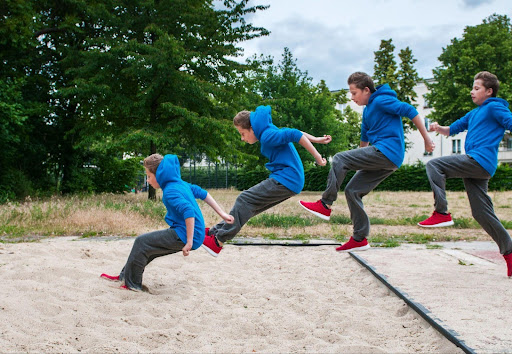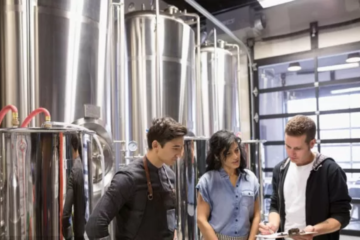Sequence photography is one of the best options for visual storytelling and creative expression. With its help, you can capture fascinating and dynamic visuals, from sports tricks to cityscapes transitioning from day to night.
How can you shoot appealing sequence pictures? Read further to discover essential tips for shooting sequence photography, along with inspiring photoshoot ideas and editing techniques to help boost your skills.
What is a sequence shot?
Sequence photography is a motion-capturing technique. As this Depositphotos blog article pinpoints, it captures a series of images of moving subjects. These images are then combined into one that shows the subject in different poses, illustrating motion.
For instance, this could be a visual of a person on a snowboard performing a trick or an image of a bird flying. Such pictures created of sequenced moments look very dynamic and visually interesting.
How to shoot sequence photography
To shoot high-quality sequence pictures, you have to keep five essential aspects in mind: your camera settings, focus, timing, equipment, and post-processing. Let’s delve into each point in more detail.
#1 Be mindful of camera settings
The basic camera settings to keep in mind in this case are shooting mode, shutter speed, aperture, and ISO.
Opt for:
- Continuous shooting mode: it allows your camera to take several frames per second (FPS). With this mode, you can capture multiple stages of motion.
- Fast shutter speed: to freeze motion, use a fast shutter speed (e.g., 1/500 to 1/2000 seconds). This will help capture crisp, clear images of fast-moving subjects.
- Wide aperture: such as f/2.8 or f/4. It will allow more light into the camera and is generally a good option if you’re shooting in low-light conditions.
- Low to medium ISO: to reduce noise, try to keep the ISO as low as possible (for instance, ISO 100–400). If you shoot in lower light conditions, you may need to increase ISO—however, be cautious of noise in this case.
#2 Pay attention to focus
Use continuous autofocus mode to keep moving subjects in focus. In this case, your camera will continuously adjust focus as the subject moves. Also, if you know where the action will happen, you can pre-focus on that spot. This can be particularly useful if you’re shooting sports or staged actions where you know the trajectory.
#3 Be mindful of timing
To know when peak action moments will happen and react to them quickly, you need to understand your subject’s movements. For instance, you can spend some time figuring out the critical points of a skateboard trick or a basketball dunk. You can also invest time into observing your subject before shooting.
#4 Use the right equipment
For instance, a high FPS camera (such as 10 FPS or higher) will be a great option to create smooth sequences. They are one of the best options for sequence photography, allowing you to capture multiple frames in quick succession and, therefore, ensuring you don’t miss any part of the action.
Lens choice can also affect visuals. Your choice of a lens largely depends on the type of action you’re shooting. A wide-angle lens can capture more of the scene and context. A telephoto one, on the other hand, can focus on distant subjects and compress the action into a tighter frame.
#5 Invest time in post-processing
Shooting sequence pictures is just a part of the process. The other, no less important part, is editing. Opt for professional tools such as Adobe Photoshop that has been considered the most popular photo editing software across the globe in 2023. Use tools like layers and masks to align and blend multiple shots seamlessly.
Pay attention to refining edges and making adjustments to ensure that the overall sequence looks natural and coherent. To polish the final visual, you might need to apply color correction, exposure adjustments, and sharpening.
5 ideas for a sequence photoshoot
Now that you know how to take sequence pictures, try using one of these cool photoshoot ideas to experiment and explore.
- Sports tricks and routines. You can photograph a skateboarder mid-trick, a gymnast during a routine, or a basketball player executing a slam dunk.
- Animals in action. You can take pictures of a bird taking flight, a cat pouncing on a toy, or a dog catching a frisbee.
- Plant growth. Take photos at regular intervals (daily, weekly) to capture the stages of a plant’s growth from seedling to full bloom.
- Artist at work. You can photograph a painter from the first brushstroke to the final touches, a sculptor shaping clay, or a street artist working on a mural.
- City from day to night. Set up a fixed camera position to capture the same scene at different times throughout the day and evening.
3 photo editing ideas for a sequence photoshoot
You can also enhance your visuals with the help of these photo editing ideas:
#1 Ghosting effect
Layer multiple images of the sequence, making earlier frames semi-transparent. This will allow you to create a sense of motion and the passage of time, highlighting how action progresses.
#2 Motion blur effect
Apply a motion blur filter to parts of the sequence where the subject is moving rapidly. This will create the effect of speed and movement, making the overall picture feel more dynamic and energetic.
#3 Color pop sequence
Desaturate the background in each picture while keeping the main subject in full color. This will help draw extra attention to the subject, making it stand out dramatically against the monochromatic backdrop.
To sum up
Adding sequence photography to your portfolio can open up a world of creative possibilities. Tips and techniques listed in this article can help you master this type of photography art and create captivating and visually striking sequences. So, grab your camera, unleash your creativity, and start a journey of discovery through the art of sequence photography.
Keep an eye for more latest news & updates on Gossips!




